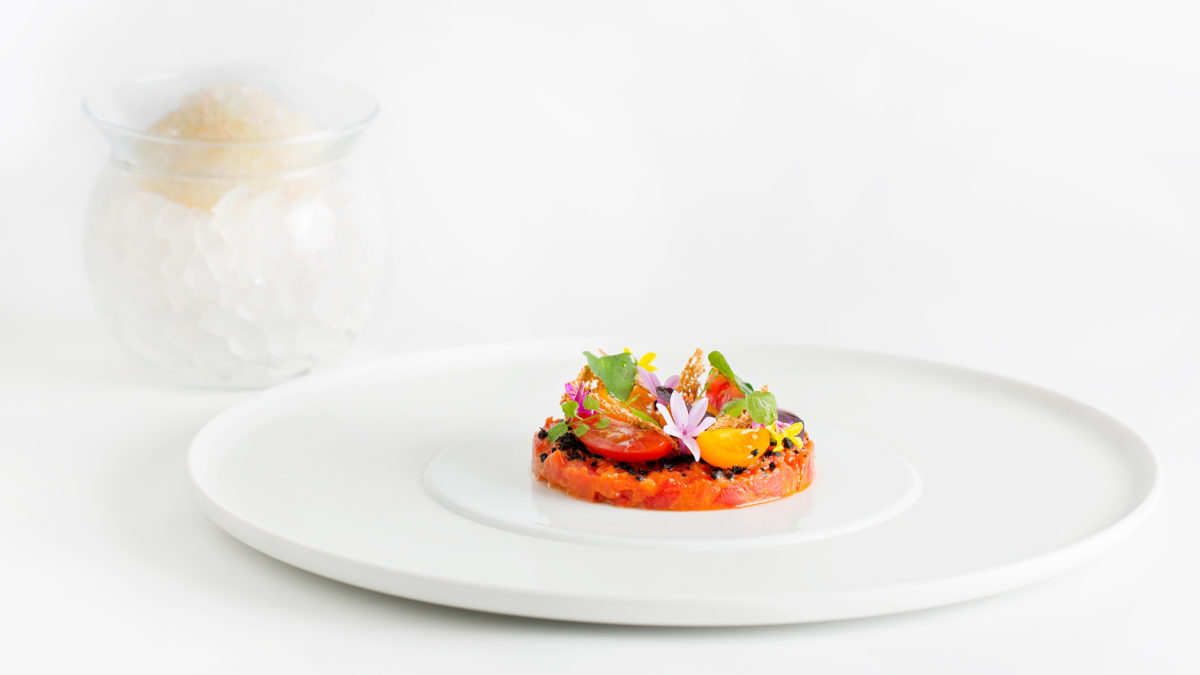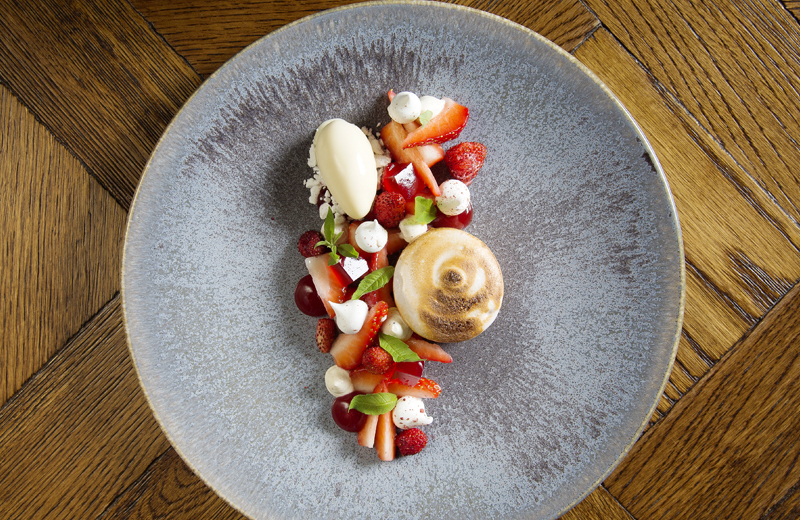Michelin-Starred Chef Jason Atherton Shares His Best Vegan Cooking Tips

When it comes to the British culinary scene at the moment there aren’t much better than chef and restaurateur, Jason Atherton. After working under a long line of greats, from Pierre Koffman to Ferran Adrià at the revered El Bulli, Atherton went solo in 2010, and within a year had already received a coveted Michelin star for his flagship restaurant, Pollen Street Social.
It’s separate vegetarian and vegan à la carte menus, have carved Atherton out as somewhat of a plant-based acolyte in the still predominantly meaty London food landscape. From deliciously nutty crosnes (nubby root vegetables) enriched with truffle jus to braised broccoli stems with lemon puree, toasted almonds, and seaweed, Atherton’s creations are a true masterclass in vegan and vegetarian cooking.
At all of our Social Company restaurants we have created some pretty amazing, Michelin star vegan food to excite our guests which I’m really proud of.
Atherton often cooks plant based meals at home for his family. “More so than meat these days,” he admits. And the vegan masterclass goes beyond Pollen Street Social, having become a vital part of the brand across his restaurant portfolio. “Social Eating House, The Betterment and 5 Social all serve varied and exciting vegan and vegetarian menus,” Atherton says proudly. The drinks menu at The Betterment even includes Form vegan-protein shakes for guests to order at breakfast or after a workout.
And so to help all you vegan and vegetarian home cooks out there, and those of you who just want to get better at using fruit and vegetables in your cooking, Atherton has kindly given us some easy and practical tips to raise your veggie game to his Michelin-starred level.

The Betterment
Don’t Over-Complicate Things (And Invest In Some Really Good Oil)
“The best way to cook vegetables is simply, with a good quality oil and just the right amount of seasoning. I think a very good oil goes a long way and can be used in both vegan savoury and sweet cooking or baking. I also like to mix flavours up a little by adding ingredients such as miso.”
Look To Japan For Inspiration
“Have a look at Japanese cuisine for inspiration; the way they combine vegetables and flavours is extraordinary. Pairing ingredients such as cucumber with shiitake mushrooms and a Japanese dressing made with soy sauce, mirin and rice wine vinegar is absolutely delicious and so simple to achieve.”

Tomato Tartare from Pollen Street Social
You Can’t Beat A Fresh Tomato
“I’m really enjoying Mediterranean style, grilled vegetables whilst the sun is shining and we’re at home. At work we use a huge array; you can’t beat beautiful, fresh tomatoes and seasonal asparagus. I also love seasonal British berries, especially when used in desserts such as a classic Eton mess.”
Saffron Is A Necessary Luxury
“Saffron is one of my go-to spices, although it’s a luxury at home. I’ll add a pinch last minute to moules marinière, or just make a simple saffron aioli dip for the table. Don’t overuse it – a little goes a long way. Another is paprika. I buddy it up with cayenne pepper for a hot, earthy duo.”

Social Eating House
Buy Fresh And Seasonal
“Local, seasonal produce always tastes best, so if vegetables are going to be the star of the dish, make sure they taste the best they can before you even do anything with them.”
Make Sure Your Vegan Substitute Is Still Healthy
“[On vegan meat substitutes], I think it completely depends what the meat is being substituted with. If you know what’s in it and it tastes great, I don’t see the problem. What I don’t like is when meat is substituted with something that is potentially not good for you or unnatural.”
Photos courtesy of jasonatherton.co.uk, photography © John Carey and The Social Company


















